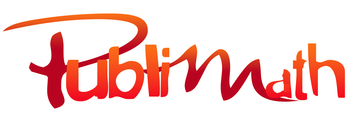Scholars and Scholarship in Late Babylonian Uruk. Uruk and the Greco-Roman World. p. 255-270.
(Erudits et érudition à Uruk dans les époques babyloniennes tardives. Uruk et le monde gréco-romain.)
Auteur : Beaulieu Paul-Alain
Résumé
Uruk semble à peine avoir été connu dans le monde gréco-romain au sens large, excepté dans des milieux plutôt spécialisés. On trouve une version de son nom grec dans la Géographie de Ptolémée et ses Tables pratiques. Les gens d'Uruk, les Orchenoi ou Orchenioi, apparaissent également dans sa Géographie, ainsi que dans son Tetrabiblos, la géographie astrologique de Ptolémée, où Ptolémée associe l'astronomie à trois peuples : Babyloniens, Chaldaioi et Orchenoi, mais apparemment à ses yeux les Babyloniens étaient en quelque sorte plus exotiques, tandis que les Chaldaioi et les Orchenoi étaient plus de "gens comme nous". Pline et Strabon connaissent aussi les Orchenoi principalement comme praticiens de la science astrale. Un fragment de papyrus récemment découvert, P. Oxy. astr.4139, nous emmène au-delà de ces références littéraires en associant les Orchenoi à des doctrines spécifiques de la théorie mathématique de la Lune. Abstract Uruk seems hardly to have been known in the broader Greco-Roman world except in rather specialized circles. A version of its Greek name occurs in Ptolemy's Geography and his Handy Tables. The people of Uruk, the Orchenoi or Orchenioi, also show up in the Geography, as well as in the astrological geography of Ptolemy's Tetrabiblos, where Ptolemy associates astronomy with three peoples, Babylonians, Chaldaioi and Orchenoi, though apparently in his eyes the Babylonians were somehow more exotic, while the Chaldaioi and Orchenoi were more 'people like us'. Pliny and Strabo also know the Orchenoi primarily as practitioners of astral science. A recently discovered papyrus fragment, P.Oxy. astr. 4139, takes us beyond these literary references by associating the Orchenoi with specific doctrines in mathematical lunar theory.
Notes
Chapitre de Scholars and Scholarship in Late Babylonian Uruk.
Données de publication
Éditeur Springer Nature Switzerland AG Cham , 2019 Collection Why the Sciences of the Ancient World Matter Format p. 255-270 Index Bibliogr. p. 269-270
ISBN 3-030-04175-1 EAN 9783030041755
Public visé chercheur, élève ou étudiant, enseignant Niveau licence, master Âge 19, 20, 21, 22
Type chapitre d’un ouvrage Langue anglais Support papier
Classification
